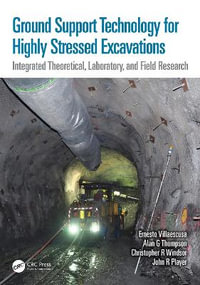| Editorial | p. xi |
| About the Book Series Editor | p. xiii |
| Foreword | p. xv |
| Preface | p. xvii |
| Brief Curriculum Vitae of the Editors | p. xxxi |
| Contributors List | p. xxxiii |
| Author Data | p. xxxvii |
| Computational Structural Dynamics | |
| Computational stochastic dynamics - some lessons learned | p. 3 |
| Finite element response sensitivity, probabilistic response and reliability analyses | p. 21 |
| Energy-momentum algorithms for nonlinear solid dynamics and their assumed strain finite element formulation | p. 43 |
| Energy conservation and high-frequency damping in numerical time integration | p. 57 |
| Computational elastoacoustics of uncertain complex systems and experimental validation | p. 71 |
| Structural dynamics design validation and optimisation of structures with imprecise parameters using the fuzzy finite element method | p. 85 |
| Morphological indicators and the prediction of the first natural frequency of a lightweight structure | p. 109 |
| Dynamic analysis of plates stiffened by parallel beams with deformable connection | p. 123 |
| Impacts on beams: Uncertainty in experiments and numerical simulation | p. 137 |
| Rational derivation of conserving time integration schemes: The moving-mass case | p. 149 |
| Classical and soft robust active control of smart beams | p. 165 |
| Rail vibrations caused by ground stiffness transitions | p. 179 |
| Development and applications of a staggered FEM-BEM methodology for ground vibrations due to moving train loads | p. 189 |
| Vibration monitoring as a diagnosis tool for structural condition assessment | p. 203 |
| Computational Earthquake Engineering | |
| Multi-resolution distributed FEA simulation of a 54-story RC building | p. 223 |
| Simplified probabilistic seismic performance assessment of buildings | p. 241 |
| Computational simulation of the seismic response of buildings with energy dissipating devices | p. 275 |
| Structural health monitoring by Bayesian updating | p. 275 |
| A multiphase model with hypoplastic formulation of the solid phase and its application to earthquake engineering problems | p. 293 |
| Mixed Lagrangian formulation in analysis of collapse of structures | p. 309 |
| Nonlinear models and nonlinear procedures for seismic analysis of reinforced concrete frame structures | p. 323 |
| Modelling inelastic buckling of reinforcing bars under earthquake loading | p. 347 |
| Analyzing steel moment-resisting connections using finite element modeling | p. 363 |
| Earthquake damage scenario software for urban areas | p. 377 |
| Nonlinear performance assessment of bridges with Incremental Response Spectrum Analysis (IRSA) procedure | p. 393 |
| The equivalent modal damping concept and its use in seismic design of steel structures | p. 401 |
| Bayesian updating and model class selection of deteriorating hysteretic structural models using recorded seismic response | p. 413 |
| Parallel soil-foundation-structure interaction computations | p. 427 |
| Dynamic interaction of retaining walls and retained soil and structures | p. 447 |
| Earthquake response of liquid tanks installed in saturated transversely isotropic soil | p. 463 |
| Advances in design optimization of reinforced concrete structural systems | p. 477 |
| Robust stochastic optimal control of seismically excited buildings | p. 507 |
| A multi-objective robust criterion for tuned mass dampers optimal design | p. 531 |
| Performance-based seismic optimization implementing neural networks | p. 547 |
| A very efficient computational procedure for the reliability-based optimization of uncertain stochastic linear dynamical systems | p. 565 |
| References | p. 579 |
| Author index | p. 611 |
| Subject index | p. 613 |
| Table of Contents provided by Ingram. All Rights Reserved. |
























